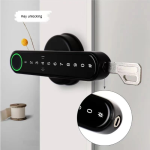The Anglo-American company highlights that Net-Hawk supports a variety of systems and devices, making it suitable for multivendor environments.
CASTLEFORD, U.K.—AMG Systems of the United Kingdom and U.S. has rolled out its new Net-Hawk IP Network Monitoring System.
The software is built to deliver full oversight of the health and performance of network hardware, servers, and any device on an IP network. Users can set up custom monitors for AMG switches, enabling in-depth tracking of each unit’s status and functions. These advanced monitors support a wide variety of parameters, giving administrators the ability to customize checks for their operations.
"AMG is known for our innovative approach to product design. With today’s networks growing in scope, monitoring the network’s operation is paramount," says Steve Clarke, managing director, AMG. "By introducing Net-Hawk, we can provide that option to the users of our equipment, enabling them to monitor operations for all other devices on that network. This ensures a minimum of downtime and automates many processes," Clarke concludes, "We’ve priced Net-Hawk very competitively and if you weigh cost versus benefit, we believe it’s a must-have for any IP Network."
Net-Hawk delivers comprehensive end-to-end monitoring and management for network infrastructure, offering clear views into end devices such as servers, cameras and access control panels, plus other IP-enabled gear. Monitoring operates through an almost unlimited range of configurable checks that report on both physical components and software layers. The company states that Net-Hawk is vendor-agnostic, meaning any device with an IP address can be tracked.
The platform lets administrators manage the entire network from a single console, with features such as remote control of ports with or without PoE, configuration backup, auditing, automated alerts and mass remote deployment of settings across multiple devices.
"Net-Hawk Config Management allows for flexible network configuration, configuration backup, remote control (i.e., reboot a camera), configuration auditing, and mass configuration deployment and firmware upgrade. Network device replacement can be configured using config backups with a replacement switch, eliminating the need for experienced network personnel to visit physical locations," adds Tom Exley, technical director, AMG.



